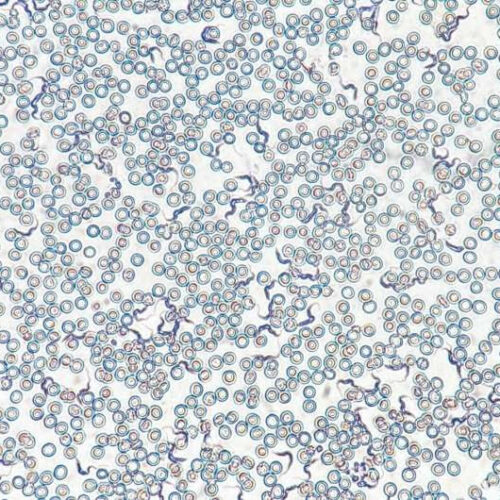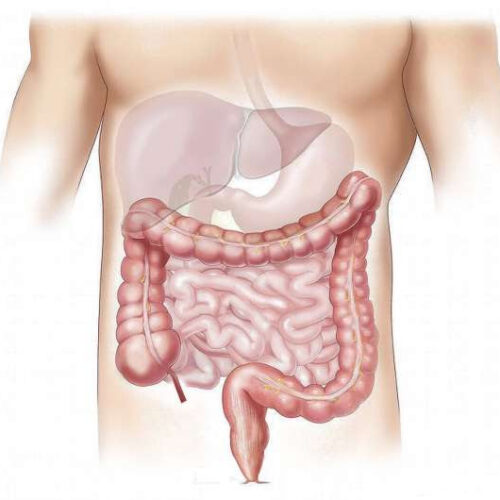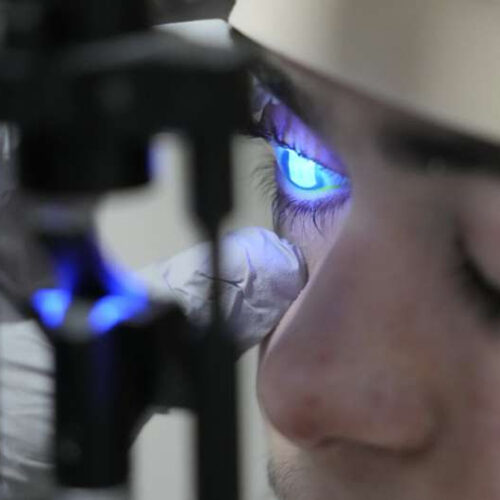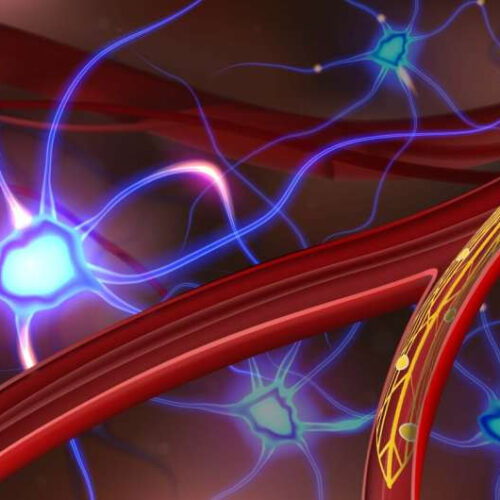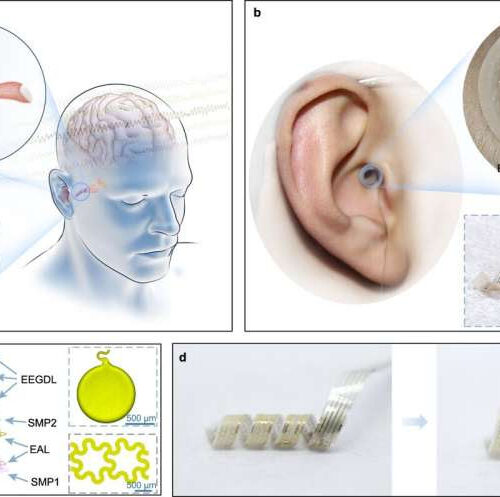by Salk Institute Parasitic Trypanosoma brucei worms (dark blue) among mouse blood cells (light blue and white). Credit: Salk Institute Although infections can present with many different symptoms, one common symptom is the loss of fat and muscle, a process called wasting. Salk scientists wanted to know whether wasting was beneficial in fighting infections. Researchers in Professor...
The key to preventing HIV progression may lie in the gut
by University of Pittsburgh Credit: Pixabay/CC0 Public Domain Restoring and improving gut health may be key to slowing HIV progression to AIDS, according to a new study by University of Pittsburgh infectious diseases scientists published today in the journal JCI Insight. The animal study, which was performed with simian immunodeficiency virus (SIV), the monkey form of HIV, revealed that tackling...
Gene therapy eyedrops restored a boy’s sight. Similar treatments could help millions
by LAURA UNGAR and FREIDA FRISARO Dr. Alfonso Sabater, checks Antonio Vento Carvajal’s eye under a blue light after applying a stain to check to see if more ulcers had developed, before a gene therapy treatment, Thursday, July 6, 2023, at University of Miami Health System’s Bascom Palmer Eye Institute in Miami. Antonio was born...
Tiny, ultra-flexible neural probes without cranial surgery open up new potentials for in vivo brain research
by Justin Jackson, Medical Xpress Micro-endovascular (MEV) probe selectively implanted into a curved branch for neural recording across the blood vessel wall. The MEV probe (yellow), which is designed to curve into branched (vs. straight) blood vessels, is selectively injected into the branched vessel by saline flow through the microcatheter (cyan) in which it was...
Oral Tau Inhibitor Continues to Show Promise in Alzheimer’s
Megan Brooks July 21, 2023 Treatment with an experimental oral tau aggregation inhibitor, hydromethylthionine mesylate (HMTM), led to a statistically significant reduction in an established biomarker of neurodegeneration in Alzheimer’s disease (AD) in the LUCIDITY phase 3 trial. Blood concentrations of neurofilament light chain (NfL) showed a 93% reduction in change over 12 months in participants receiving...
Bacteria-hunting viruses help diagnose and treat UTIs
By Michael Irving July 23, 2023 Bacteriophages seen under the microscope Matthew Dunne / ScopeM / ETH Zurich Viruses may get a bad rap, but some of them can be helpful to fight off bacterial infections. Scientists at ETH Zurich have demonstrated a new way to use them to diagnose which bacteria is causing a...
Grow-your-own stem cells may repair Parkinson’s damage
By Bronwyn Thompson July 24, 2023 Parkinson’s disease patients may one day use their own cells to regrow neurons Depositphotos A new stem cell therapy for Parkinson’s disease is one step closer to human trials after scientists were able to successfully rebuild neural damage in an animal model. Researchers from Scripps Research and Cardiff University...
‘Strikingly Positive’ Effect of Novel MS Agent
Nancy A. Melville June 09, 2023 UPDATED June 12, 2023 // Editor’s note: This story has been updated with additional comments from Dr Ahmed Obeidat from the Medical College of Wisconsin. Frexalimab, a novel, second-generation anti-CD40L antibody, shows “strikingly positive” effects in the treatment of relapsing multiple sclerosis (MS), significantly reducing disease activity. “We should be very excited about these results,...
Spiral brain-computer interface slips into ear canal with no loss of hearing
by Bob Yirka, Medical Xpress Design of in-ear bioelectronics. a Schematic diagram of in-ear EEG recording by SpiralE. b Pictures of SpiralE conformally adapting to the inner wall of the ear canal. Upper-right inset is a photograph captured by a medical endoscope. Lower-right inset shows the irregular three-dimensional structure of SpiralE after removal form ear....
Study shows how the brain coordinates neuronal processing and communication during sleep
by Ingrid Fadelli, Medical Xpress The recorded signal reveals when neurons fire. Credit: Christian Burkert / Volkswagen-Stiftung / Universität Bonn. Past neuroscience studies have shown that while humans are sleeping, the brain remains highly active, consolidating memories and removing toxins accumulated during waking hours. While memory consolidation during sleep is a widely documented phenomenon, the...

